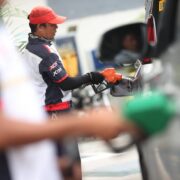Where the water rises, so does the rage: The cycle of floods and neglect

Every year, it’s the same script.
Rain pours. Streets flood. Social media floods, too—photos of submerged homes, drenched schoolchildren wading through murky waters, and barangay roads that look more like rivers than thoroughfares. And when the sun returns, so do the promises:
“Next year, tapos na ang drainage project;” “May pondong inilaan sa flood control;” “Priority ‘yan ng bagong administrasyon.”
Yet again, our cities and barangays flood—the same knee-deep waters, the same brown tide creeping up the same streets, the recycled apologies, the same lies. It has become a cycle so familiar that we could recite it in our sleep. Only, sleep doesn’t come easy when rain starts to pour and your family’s safety depends on whether the canal has been cleared this year, or ever.
We are told there are plans—drainage master plans, flood mitigation projects, billions in funding. But on the ground, it feels like we’re left with blueprints that never break ground and groundbreaking ceremonies that end in mud. Because the truth is, we’re not just drowning in rain. We’re drowning in systemic neglect.
I grew up memorizing the sound of floodwater climbing up our front steps. We’d joke about it, calling it “the annual swimming pool,” but behind the humor was exhaustion. Our family’s furniture has floated more times than I can count. And while politicians change, the situation doesn’t. We hear the same pledges every election cycle. Flood control projects are announced with fanfare, ribbon-cuttings, and billboard-wide smiles. But when the next typhoon hits, we’re still bailing water out of our homes with tabo and frustration.
Where’s the accountability for drainage projects that are either delayed, defective, or downright abandoned? Where did the funds go, those billions allocated for flood control? Who pockets the progress while the rest of us wade through failure?
We are not knee-deep in water just because of nature. We are knee-deep in neglect. Flooding in the Philippines is a systemic issue worsened not by nature alone but by negligence: clogged and poorly maintained drainage systems, unregulated urban development, and a lack of sustainable planning. Every year, billions are allocated to infrastructure, yet somehow, the same streets stay submerged. Corruption and inefficiency in public works aren’t just statistics—they’re a slap in the face to families who lose everything in a matter of hours.
And what of those who can’t afford to relocate, who don’t have the option of moving to flood-free subdivisions or condos? The poor, as always, bear the brunt of state failure. Their voices drown in the noise of bureaucracy and blame passing. When evacuation becomes routine and relief goods are your only insurance, how long until hope starts to sink too?
Every flood should be a wake-up call. But instead, we get press conferences, relief packs, and shoulder pats. We are thanked for our “Bayanihan spirit,” when what we need are functioning drainage systems and leaders who don’t disappear when the rain clouds roll in. We are praised for our resilience when what we need is accountability. Why do we celebrate people wading through waist-high water as heroes, instead of demanding answers from those who let that happen in the first place?
We’ve been resilient long enough. Maybe it’s time to be angry. Because beneath every flood is a failure, not just of infrastructure, but of leadership. We don’t need more promises. We need proof that our lives, our homes, and our futures are not as disposable as the trash clogging the canals.
The water keeps rising. So does our rage. And if the system won’t change unless we make noise, then maybe it’s time we drown out the excuses with outrage. Maybe it’s time we stop treating resilience as a virtue and start treating neglect as a crime.
Because floods shouldn’t be annual events. And outrage shouldn’t be seasonal either.
Kateleen Joyce Malijan,
malijankate@gmail.com

















We say no to violence against women